Pioneer of Italian Fashion: Artist-Designer Rosa Genoni
An Italian artist-designer at the turn of the 20th century, Rosa Genoni is described as a founder of Italian fashion, a dressmaker, a teacher, a...
Nikolina Konjevod 13 May 2024
Before air conditioning, women relied on fans to keep themselves fresh during the summer. The accessory became so popular during the 18th century that this period is considered the “Golden Age of Fans,” especially in France. These Rococo fans were carefully built by several craftspeople using luxurious materials, such as ivory and nacre. Moreover, they were decorated with historical, domestic, countryside, religious, mythological, and even satirical scenes. Art historians are turning their attention to these exquisite objects to explore their meaning as social instruments and tools of communication through their painted leaves.
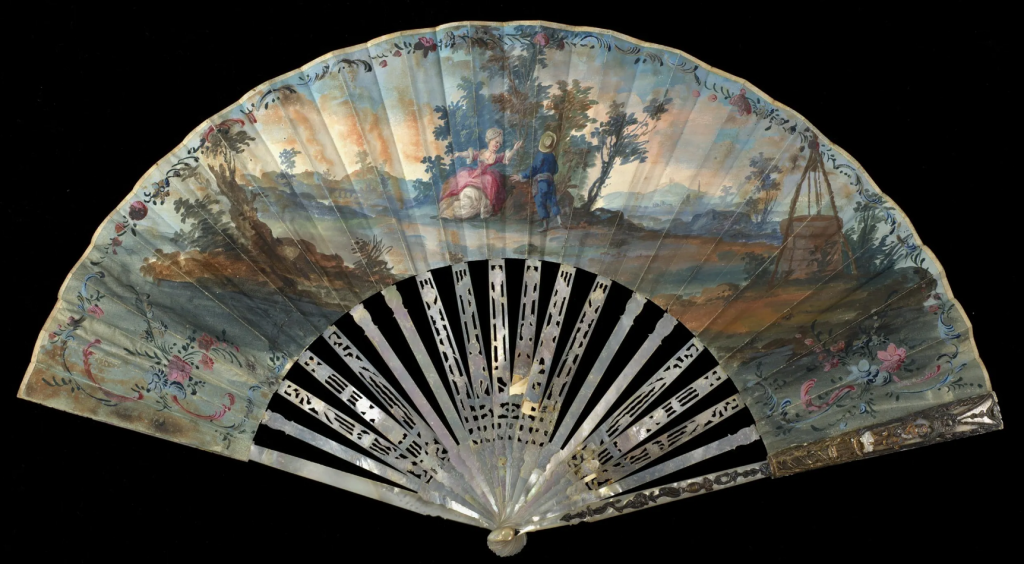
French Fan (pastoral scene), late 1760s, Smithsonian American Art Museum, Washington, D.C., USA.
Throughout history many cultures had developed fan-like objects, but it was in East Asia that fans as we know them originated. They were initially brought to Europe by merchants at the end of the 15th century and Catherine de Medici pushed their introduction to the French court. A lot of fans were imported but European manufacturers appeared, too. The French took the lead in 1678 when they created the first corporation of fan makers.
The folding fan was particularly popular. It is comprised of a pleated leaf attached to a monture (the fan’s frame) that forms ribs connected at the end with a rivet.
The following illustrations appeared in Diderot and d’Alembert’s Encyclopedia in 1765.
As with any product, materiality denoted the status of the buyer. In the fans’ case, the most luxurious pieces contained ivory and nacre. Furthermore, fan makers would add precious stones, gold, or silver to them. Surely, ladies who owned these items belonged to the aristocracy or other exceedingly wealthy families. Middle and lower classes were also able to buy fans, but the materials used were far more affordable, like wood. Sometimes they acquired second-hand pieces that had been discarded by upper-class ladies.
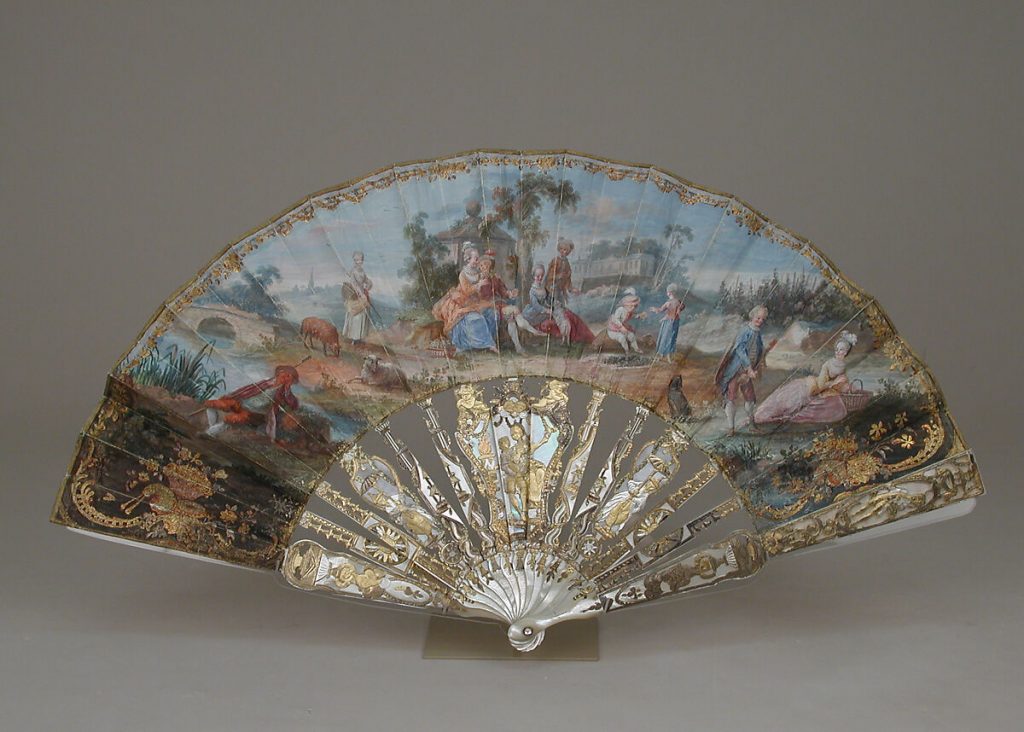
Folding Fan, mid-18th century, Metropolitan Museum of Art, New York, NY, USA.
If you watch period dramas, you would often see references to the “language of the fan.” It is the idea that a lady could move her fan in certain directions to convey a message to a suitor. During the 18th and 19th centuries, a series of texts detailing every single move allowed readers to interpret them. While that could have been entertaining the reality was much different, those writings often come with a satirical tone. Today, scholars like Pierre-Henri Biger consider this the reason behind the disinterest in Rococo fans. However, that does not mean fans did not convey specific information. In fact, not only were they used as a way of communication, they also said quite a lot about the ladies carrying them.
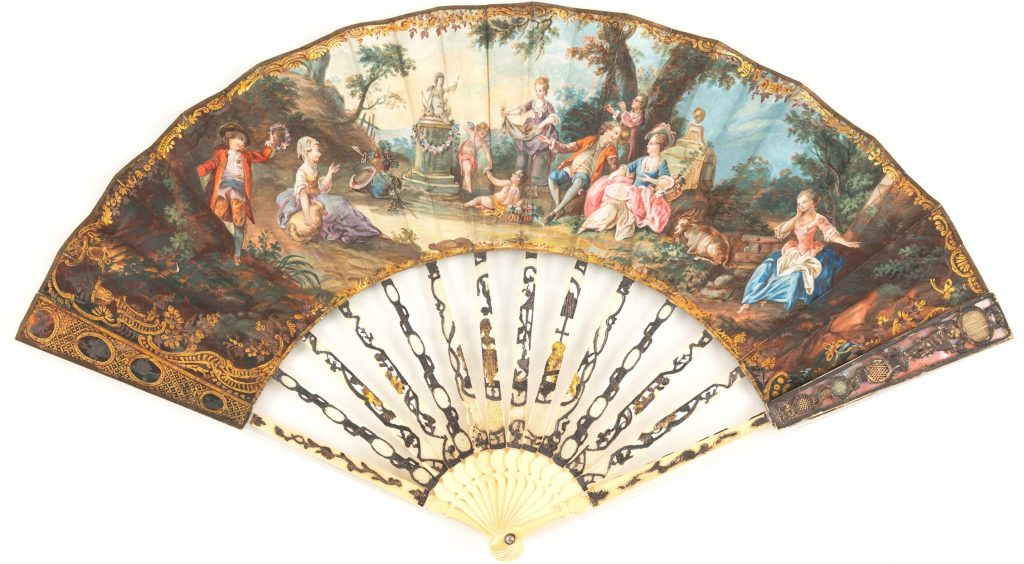
Handpainted Fan from France, 1750-1770. Powerhouse Collection.
The leaves of Rococo fans served as a canvas to communicate ladies’ thoughts. There was a wide variety of themes from which to choose. Women picked their fans according to the occasion and their status. These were not simple illustrations, some of them were copies of great historical paintings by Francois Boucher, Jean-Honoré Fragonard, Antoine Watteau, and others. Mathilde Semal researched the Preciosa collection of the Art and History Museum in Brussels and found a correlation between the genre of a fan’s image and the material its monture was made of. For example, ivory and nacre based fans feature historical paintings. This seems logical given that such works of art were at the top of the hierarchy of genres.
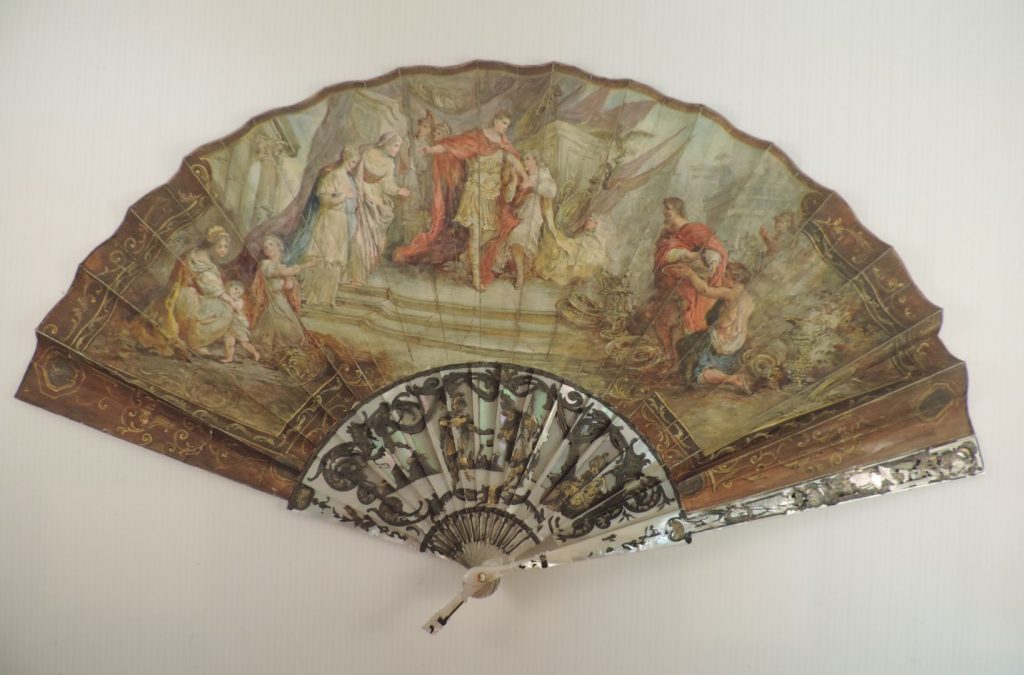
Folding Fan, The Continence of Scipio, 1770, Art & History Museum, Brussels, Belgium. Photo by Mathilde Selman.
The fan above features a copy of The Continence of Scipio by François Lemoyne (1688-1737). Notice that the image is reversed, probably because the fan painter used an engraving as a model.
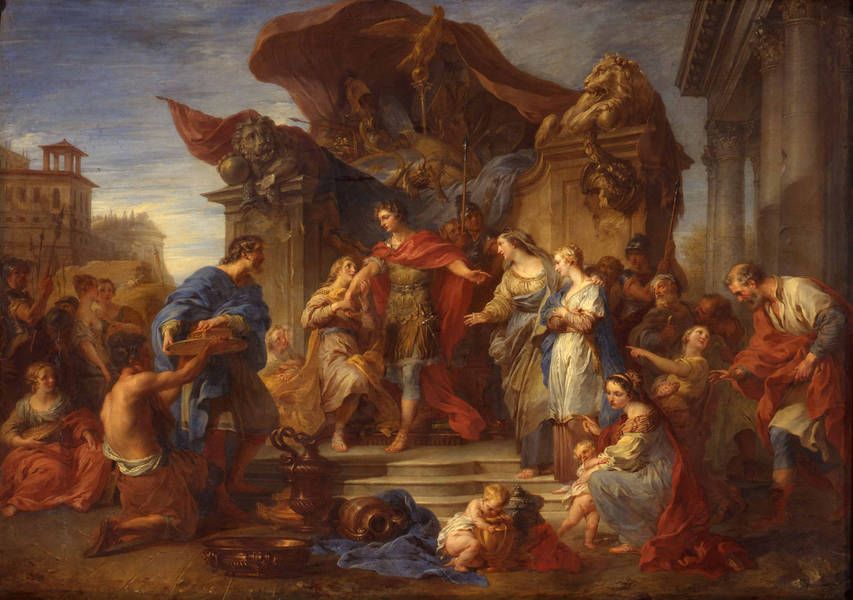
François Lemoyne, The Continence of Scipio, 1726, Museum of Fine Arts of Nancy, Nancy, France.
Rococo fans weren’t just an accessory to cool yourself during summer. As previously mentioned, they also conveyed messages. Usually, they were only decorated on one side which would be visible to other people. The back side had some details but wasn’t as elaborate. Since fans were portable objects, they allowed women to show them anywhere. Furthermore, the fan owner had control over how much they let others see by opening them fully or partially. A fancy and expensive fan with a mythological scene could indicate the social status of a person during a ball. They were showing off how cultured they were. Or, a pastoral scene like the one below reflected the upper classes’ enjoyment of country life.
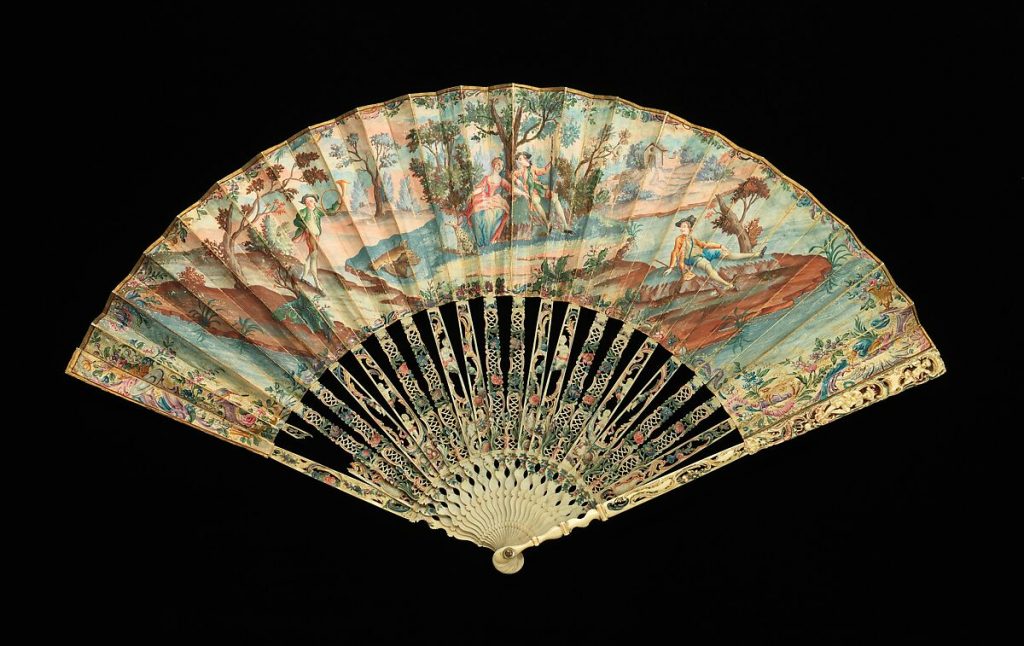
Fan, 4th quarter of the 18th century, Metropolitan Museum of Art, New York, NY, USA.
Some examples made during the Golden Age of Fans are quite interesting. The following fan looks like an innocent set of country scenes. However, if you look closely at the central vignette, there is a satire of women’s wigs. Moreover, it recalls the cartoon The Ridiculous Taste or the Ladies’ Absurdity by English artist Matthew Darly. Today, the Fan Museum in Greenwich, England catalogs it as a French fan. So, what kind of message is this? At the time, people saw wigs as objects of luxury and symbols of the Old Regime. Is this against the monarchy and the aristocracy? But the materials (silvered and gilt ivory) indicate that this fan’s owner was wealthy.
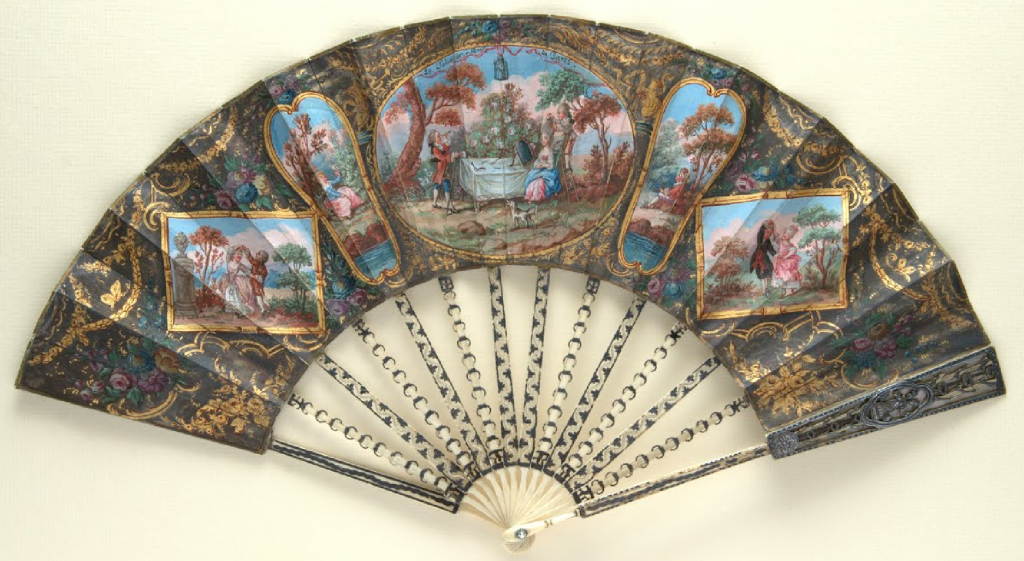
La Folie de Dames de Paris, c. 1770, Fan Museum, Greenwich, UK.
And where would she use it? Maybe she attended salons where she discussed her ideas about the Enlightenment. Perhaps she was a salonnière, a woman who hosted these reunions and led the conversations. If so, she was an influential woman with fascinating modern ideas.
After the Revolution, fans lost their popularity for a few decades. Luckily, many of them were preserved. They show the skill and creativity of Rococo fan makers and give us a taste of the ladies’ minds.
Alexander F. Tcherviakov: Fans, 2014, Parkstone Press International.
Georgina Letourmy-Bordier: La Feuille D’éventail: Expression De L’art Et De La société Urbaine, Paris 1670-1790, 2006, Academia.edu.
Lydia Vázquez and Juan Manuel Ibeas Altamira: L’Éventail Au XVIIIe Siècle: Un Masque Féminin Avec Tout Un Éventail De Fonctions, 2018, Cahiers Erta.
Mathilde Selman: Introduction, 2018, Koregos.
Miriam Volmert and Danijela Bucher: European Fans in the 17th and 18th Centuries Images, Accessories, and Instruments of Gesture, 2020, De Gruyter.
The Fan Museum: The Golden Age: Eighteenth Century Fans, Google Arts and Culture.
DailyArt Magazine needs your support. Every contribution, however big or small, is very valuable for our future. Thanks to it, we will be able to sustain and grow the Magazine. Thank you for your help!